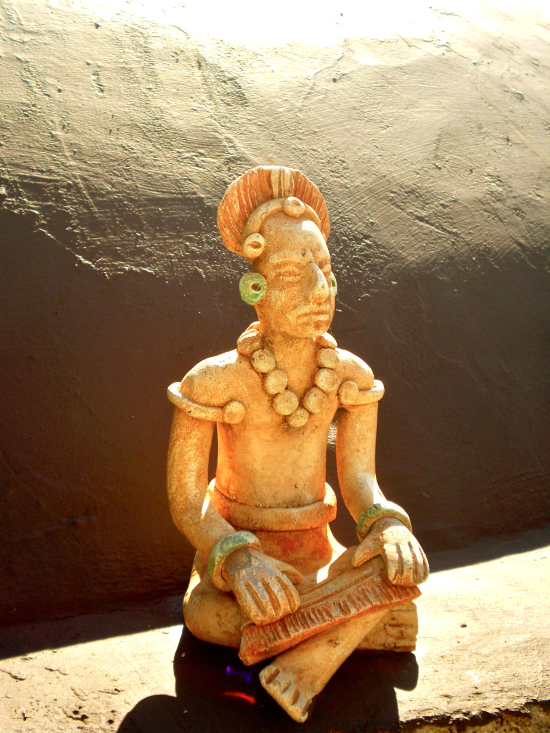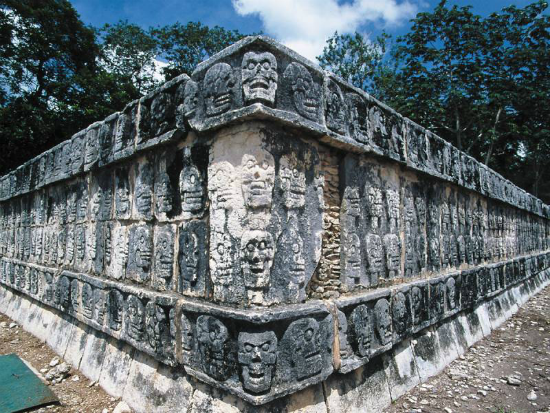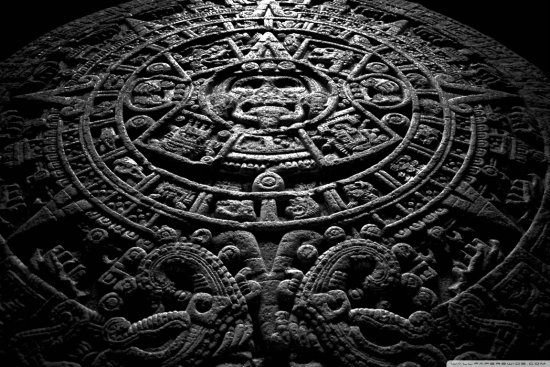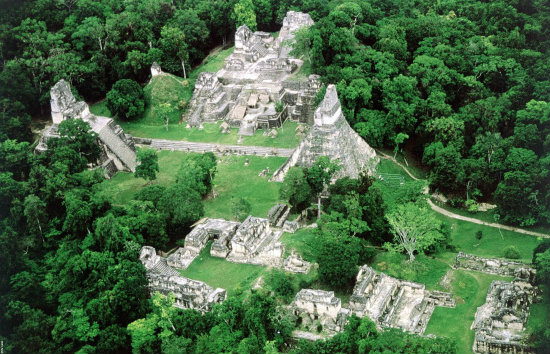Mayan Culture & History
Meaning of Maya: Astronomers, mathematicians, agronomists, philosophers, artists, architects, sculptors and warriors – the Maya of old were a rich, complex society that continue to fascinate.
Their stunning accomplishments are still evident today: it was they who first cultivated chocolate, chilli peppers, vanilla, papayas and pineapples. The Maya built causeways and reservoirs, created great works of sculpture and art, carved fantastic jade masks and wove rich colorful textiles. They also developed sophisticated mathematical systems; complex, accurate calendars; and perfectly proportioned buildings of immense size and beauty. Much of this while Europe remained in the Dark Ages.
In the modern world, observers continue to comment that Maya culture will soon disappear. Roads and cars have made their world smaller; seaside resorts such as Cancun attract hoards of camera-clicking foreign daytrippers; and television brings cosmopolitan Mexican and North American programs into remote villages. But the Maya have always been resilient. Their history has reinforced a pattern of community-based culture – with pride and respect for tradition. Their communal society has adapted modern means to preserve the Maya culture and language. Besides, they’ve had nearly 475 years to practice survival skills under pressure – and even longer before that.
THE BEGINNING:
The rise of the first civilizations in Mesoamerica took place in what’s called the ‘Preclassic period’ (ca. 1500 B.C.-A.D. 250), with several different peoples in several different areas of Mexico and Central America – the Zapotec of Oaxaca, the Olmec on the Gulf coast and the Maya in the lowlands and highlands of Guatemala and Mexico, ideal crossroads on the huge land bridge between the Americas.
Powerful kings who were both rulers and high priests had direct responsibility for the ordered world of the Preclassic Maya. The success and power of their rule was in a direct relation to the kingdom’s military strength. Inter-city rivalries were common and, if defeated, the high-living royalty often met ignominious sacrificial ends.

By A.D. 400, complex writing and regional trade had developed and some impressive capital cities had been built. El Tigre, the largest single Maya temple ever built, was constructed at El Mirador, an important Preclassic city a few kilometers south of the Mexican border in the Pet‚n region of Guatemala. The Maya civilization waxed and waned during three periods archeologists have distinguished as Preclassic, Classic and Post Classic.
The end of the Preclassic period may have come about with the eruption of a volcano in 250 A.D. in El Salvador that spewed ash over much of the southern Maya area. Loss of agriculture and commerce in the south increased the importance of the lowlands of the Yucatan in the north, thus be getting new power bases and new glory days of Maya civilization.
CLASSIC SPLENDOR:
The apex of Maya growth and prosperity occurred during the time A.D. 250-900. The Early Classic (A.D. 250-600) saw the rise of city states of Tikal and Calakmul – who struggled with each other for control of the lowlands. Calakmul eventually defeated Tikal but was unable to exert power over more territory, losing its chance to rule the world. The Early Classic period gradually slid into the Late Classic period (A.D. 600-800). The Classic age is considered to be the peak of Maya civilization with advanced building styles and carved stone records called stelae. Large ceremonial city centers were built that included massive stone pyramids, ballcourts and platform temples. Tikal reemerged as a powerful city of as many as 40,000 people over six square miles – a population density comparable to an average city in modern Europe or America.
But for reasons not fully understood – drought and overpopulation are two theories – the Classic kingdoms began to lose their luster. The last hundred years of this time are known as ‘Terminal Classic’ and, as the name implies, marked the demise of the era. Maya kings’ influence over the population declined, indicated by the halt of ceremonial construction, and by A.D. 900, with no more dated religious stelae carved in Tikal, it was a clear end of the epoch. The great mystery is why. That question lured the Yucat n’s first tourists, John Lloyd Stephens, a self-taught American archeologist, and Frederick Catherwood, an English sketch artist experienced in architectural drawing, to explore the ruins of southern Mexico. They set out in the midst of social and civil war and recorded 44 abandoned ruins. Stephens wrote two books, Incidents of Travel in Central America, Chiapas and Yucatan (1841) and Incidents of Travel in Yucat n (1843), which launched the archeological search for the Maya past.
Of his first visit to Uxmal he wrote: ‘… emerging suddenly from the woods, to my astonishment came upon a large open field strewed with mounds of ruins and vast buildings on terraces and pyramidal structures, grand and in good preservation, richly ornamented, without a brush to obstruct the view, in picturesque effect almost equal to the ruins of Thebes.’ Stephens was one of the first who correctly surmised that the ancient cities of the Maya world were built by the native people still living there and not some mysterious Egyptian or lost European race.
Cities that reached their prime during the Classic period – Palenque, Tikal, Uxmal, Cob , Edzn and Copan – are often thought of as the cities of the ‘lost’ Maya civilization. No one knows exactly why these great metropolises were suddenly abandoned – forfeited to the jungle – beginning in the ninth century. However, the beginning of the end of the Classic period did not mean the complete end of Maya culture. Other cities rose to take their place.
A HOUSE DIVIDED:
Into the vacuum caused by the demise of the Classic kingdoms came outside invaders into the land. The lowland Maya were partly conquered around A.D. 850 by the militaristic Toltec peoples from the highlands of central Mexico and the Itza , a Mexicanized Chontal-Maya tribe perhaps from Tabasco. The capital they occupied and built in mixed-architectural-style grandeur was centrally located Chichen Itza in northern Yucatan. The foreigners brought with them their fierce warrior ways, blended religion and influences from central Mexico, such as the cult of the Feathered Serpent (Quetzalc¢atl or Kukulcan).
KUKULCAN, IF YOU CAN…
No other deity-personage ever created a deeper impression on Mesoamerican people than Quetzalc¢ atl (‘Snake of Precious Feathers’ or ‘Plumed Serpent’). The Maya origins of the legend begin with the Toltec civilization in Mexico’s central valley around the mid 900s. Topiltzin, a young Toltec prince, entered the priesthood of the ancient god of civilization and fertility, Quetzalcoatl. As was the custom, he assumed the name of the deity. He became a great leader and spurred the Toltec to new heights of civilization. His name became inseparable with the legend. But a power struggle with other lords forced him into exile. Maya records indicate that Quetzalcoatl, or Kukulcan as they called him, invaded the Yucatan and may have ruled at Chichen Itza . Legends of his ‘death’ vary, but all state that he would return to vanquish his enemies. The vague date indicated was 1-Reed, the anniversary of his birth in the cyclical calendar. This was the sword of Damocles that hung over the Aztec, the civilization that had succeeded the Toltec by the time Cortez landed in 1519 – the year of 1-Reed.
The most beautiful bird of Central America is the Quetzal; very rare, especially in the Yucatan. Its long, brightly colored tail feathers could be worn only by Maya royalty and it was forbidden for anyone to kill one. Their non-flight feathers were plucked and then they were released to grow new ones.
The Yucatecan Maya despised the Itza Maya and referred to them with such epithets as ‘foreigners,’ ‘tricksters and rascals,’ ‘lewd ones,’ as well as ‘people without fathers or mothers,’ in surviving Maya chronicles. The Itaz ruled the Yucatan from their centrally located capital until the city fell to warriors from a rival city, Mayapan, in A.D. 1221. In what may sound like a plot from Shakespeare, the ruler of Chichen kidnapped the wife of the king of Izamal. Izamal’s main ally was the opportunistic king, Hunac Ceel, of Mayapan. His warriors drove the Itza from Chichen and the victorious city of Mayapan became the new center of civilization. But Mayapan was in turn sacked and abandoned in a civil uprising around A.D. 1440 after a later Cocom king apparently tyrannized his people. The revolt, lead by a prince of the Xil family, slaughtered him and his family. One son, away on a trading mission, survived. In an ironic twist of fate, one of his descendants would wreak terrible revenge on all the Maya people nearly 100 years later.
In 1536, after the Spanish had been initially driven out of most of the Yucatan, the ruler of the Xil at Mana decided it was a good time to offer thanks to the gods at the Cenote of Sacrifices in Chichen Itza . Nachi Cocom, the great grandson of the surviving Cocom son, granted the Xil ruler safe passage through his province on the way. He entertained the 40-man travelling court for four days until a banquet on the last evening, when he and his warriors suddenly turned and butchered their Xil guests. This treachery caused a civil war between the two most powerful kingdoms in the Yucatan. Luckily for the Spanish, when they returned in 1540 they found a Maya empire divided against itself.

There’s an interesting sidelight to the fall of Chichen Itza in 1221: Surviving Itzas fled south and settled on an island in the middle of Lake Peten in Guatemala. They founded a city known as Tayasal, now named Flores. This isolated Itza kingdom remained intact until 1697 – over 450 years after their defeat at Chichen and 150 years after the Conquest – when a Spanish naval force finally destroyed the last of over 3,000 years of Maya high civilization.




